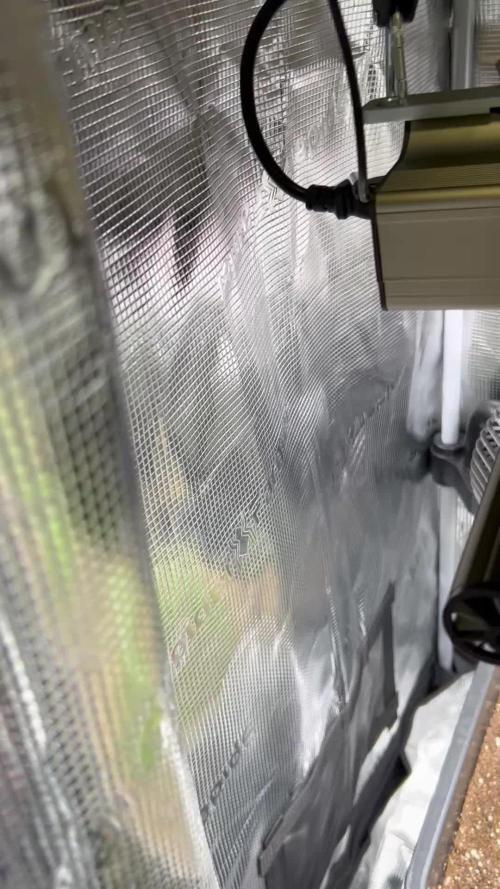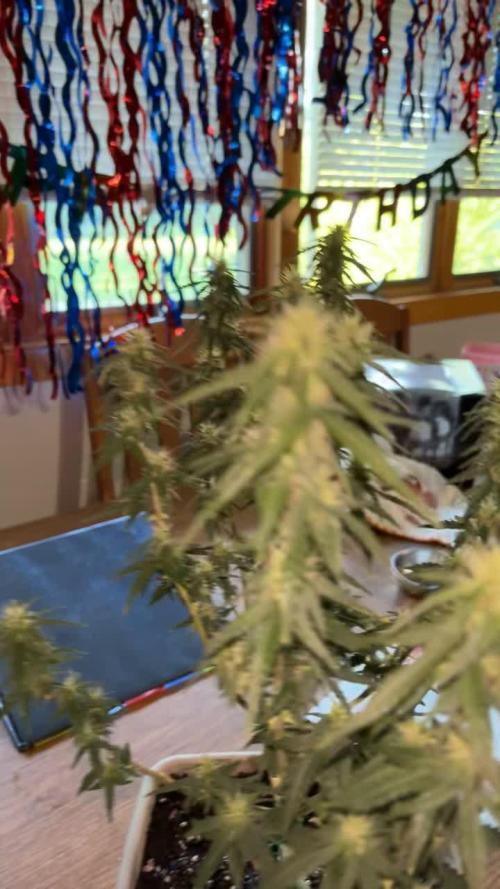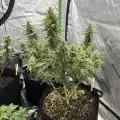The Grow Awards 2026 🏆 

































Likes
Comments
Share


@Aranseed
Follow
Ya no nos falta nada y la mirada de estas nenas seduce cada vez más. Super buena contextura nuestra sublimator es muy posible que este dentro de unos 10 días mas siendo que hoy por calendario ya deberia de estar lista (son plantas, no es mucha sorpresa) tiene un color muy bien marcado, un olor fuerte y dulce y ya casi llegando a su punto de cosecha. Nuestra amnesia molotov no a dejado de engordar y promete una producción muy suculenta y el olor es incluso aun mas penetrante que el de sublimator. De estar listo antes adelantare su cosecha y su estado, pero hasta entonces esperar y a hacer lavado con final flush de BAC
Likes
27
Share


@DeepRootsGrowTrees
Follow
Week #16 Gelato-K By Kannabia
Week #5 Flower
She's about mid way through 🌼 covered in trichomes and you can smell her aroma it's strong 💪!! Great 👍 genetics at Kannabia Seeds!! Thank you for checking the diary much appreciated!!
Likes
10
Share


@Naujas
Follow
2 weeks have passed, the girl has a little too much nutrients, but she will get through it :) the girl doesn't seem to be tall, I think she will be more like a bush :) everything looks good, good luck to everyone!
Likes
4
Share


@Willy_Balls
Follow
Last week ahead. Next time will cut nitrogen earlier. These ice cream cakes did not like it at this level. Also had a little dripper clog and mokums tulip got a little burnt. At these high ec levels they are super sensitive to drybacks.
Likes
2
Share


@Catawbiense
Follow
So i did top them yesterday. Increased the lights to 75% (2x75w=150w). They now will get some time to recover. I will start with some lst soon. End of this week they will get their final 11Litre pots (Rootpouch).
Likes
4
Share


@babaweed
Follow
These kush are really beautiful and have huge peaks, they have 13 internodes and each of them is full of buds, quite large. They are really huge touch the ceiling, maybe one is too close to the lamps and I'm afraid you burn a little bit
Likes
5
Share


@Kumba1190
Follow
Die dritte Woche beginnt.
Der Wachstum steigt stark an. Ich führe das LST weiter fort, damit die Pflanze die gesamte Breite des Topfes einnehmen kann.
Ich denke bisher sieht es doch schon sehr gut aus.
Die Pflanze hat sich gut in den Töpfen eingefunden und breitet sich gut aus.
Es bleibt spannend.
Update: Nachdem ich mit dem LST angefangen habe, strecken sich die Pflanzen weiter gut.
Heute habe ich wie folgt gegossen:
1 Liter pro Pflanze mit 4ml pro Liter Green Power 5 in 1.
Processing
Likes
5
Share


@Audacissimus
Follow
Later on week 1, all the plants were given aprox. 1,25 grams (Bactomatik) on 500 ml water (ph 6,5)
This week was the first feed with BioBizz Grow.
They all responded very well to the above and are growing normally.
Later on, will add end of week 2 video.
(Added video for end of second week)
Likes
15
Share


@MorangoTango
Follow
O calor diminuiu um pouco, mas nessa última semana as plantas perderam bastante cheiro devido a temperatura.
Likes
3
Share


@Mr_nugs_lover_David
Follow
This lady is such a beautiful bush full of heavy flowers, stinky as hell guys, very terpy, for all the sweet indica hybrids there you have authentic gold. Very sweet and the tops are absolutely wonderful, it's beautiful to see those fat nuggets. She's 100% organic and prebiotically grown using living soil FLO that contains a lot of different strains of mycorrizae and endomycorryzhae, a lot of beneficial bacteria, worm casting, and acid and humic and fulvic acids plus Silicium Flash by biotabs that contains npk 100% from natural sources like bug shit 🐛. My soil just bubbles every day that I water it, it's awesome to see the beautiful organic alive soil I've build. Loving the pure aromas man 🤩👃🍭🥧🍪
Processing
Likes
4
Share


@Ogbangbang2981
Follow
this week is like every other feed bat poo tea and straight water outdoors so sun takes care of her right through
Likes
3
Share


@curious_jules
Follow
Buds filling out rapidly.
Had a near miss with accidental over-feeding this week. Burnt some leaves. Recovered quickly with a quick flush of the system, but may impact yield. Half a dozen leaves frazzled.
Likes
14
Share


@Houdini
Follow
Now she taking the whole greenhouse, Nutriment added twice a week
Water ph: unknow💦
Likes
9
Share


@Mr_nugs_lover_David
Follow
I Should have been chopped down 5 plants instead of just one however I lost her 4 sisters because of fungal infection due to a high humidity and and a very hot day. Wish I could have been able to get a lot of jars full of this wonderful and magical organics nugs.
Likes
85
Share


@420DeepGrow
Follow
Una semana satisfactoria, ha resultado ser una bonita hembra , continuo con el diario.
Se notan tricomas en las hojas, seguramente se llenara de resina.
📅 Dia 8: sesion de fotografías.
📅 Dia 9: Riego con nutrientes EC 1.100 EC escurrida 2200, se ha subido algo la EC, siguientes riegos a agua hasta llegar a la EC deseada.
📅 Dia 10: Riego con agua, se seca en solo 24 horas, tendre que estar pendiente. EC escurrida por determinar
📅 Dia 11: Riego con nutrientes EC 900 EC escurrida 1700.
📅 Dia 12: Descanso, en el proximo riego necesita comer, lo noto en su aspecto.
📅 Dia 13: Riego con agua y sale una EC escurrida de 850, a si que aplico otro riego con nutrientes EC 1350 y escurre 1300. Ahora si que se alimenta de los nutrientes y no sobran sales.
📅 Dia 14: Descanso
Likes
16
Share


@KingSalomonsWeed
Follow
Day 43 of life. Flower 8.
Last 4 days a lot of stretching.
14.12.... A lot of life in her...
, 16.10.10 TEN TTEENN SIDEBRANCHES!!!!!!!
I did nothing. 10 plus main with 2 sides in the main.. 😛 💪
27.12. Day57
22 of flower.
2 weeks re gone. She stopped stretching. Buds on the way.
Likes
12
Share


@Exotic_Grower
Follow
Week 6 starts good so far
Two plants looks a little burn on the leaves
The hole thent smells strong of citrus and the terp profile is increadible. The hole side branches and the leave branches are full with terps
Edit on day 63: one plant (the one in the middle) startet to get a wired burn on the leaves. They getting Brown and Fall down on the edges. I dont know what she is Missing😬


























